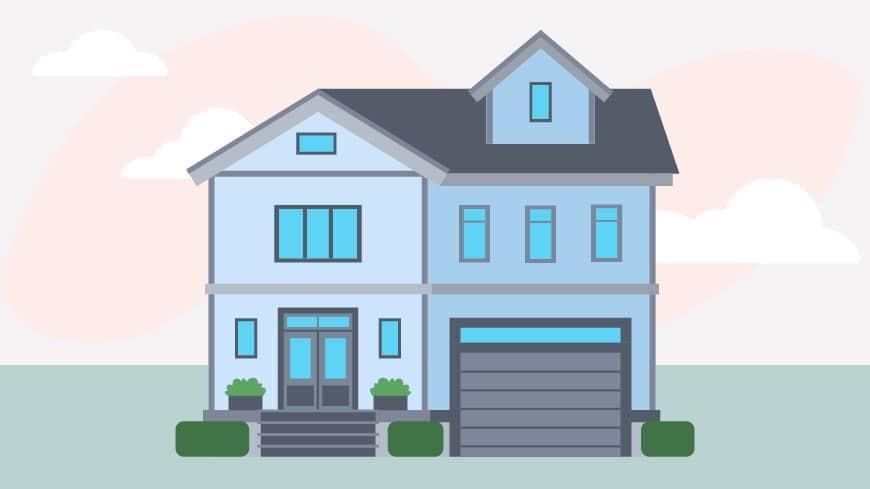How to Get Rid of Private Mortgage Insurance (PMI)

Many people dream of owning a home but the extra cost of Private Mortgage Insurance (PMI) can derail the plans of hopeful homeowners. The good news is there are ways to eliminate PMI and save money that could boost your financial flexibility and bring you closer to true homeownership.
Let’s take a closer look at how to get rid of PMI and maximize your mortgage benefits.
If you’re ready to take control of your mortgage journey, complete our digital mortgage application today and discover your home affordability options!
Do I Need PMI on My Mortgage?
Private Mortgage Insurance (PMI) is often necessary for borrowers who can’t make a down payment of at least 20% on their home purchase. This is to protect the lender, as these borrowers are considered higher risk for default.
Although many people believe a 20% down payment is necessary to buy a house, it’s common for borrowers to put down less and pay PMI. For example, in 2023, the typical down payment was 8% for first-time buyers and 19% for repeat buyers, according to the National Association of Realtors.
PMI is included in your monthly mortgage payment, along with principal, interest, and escrow payments. The cost of PMI varies based on your credit score and loan-to-value ratio (LTV), but borrowers can expect to pay anywhere around $30 and $70 for every $100,000 of their loan.
Can I Get Rid of PMI on an FHA Loan?
Many FHA loan homeowners can get PMI and MIP confused. If you’ve ever wondered how to get rid of PMI on FHA loans, you’ll be happy to know that for FHA loans, PMI does not apply.
Instead, FHA loans require a different type of mortgage insurance known as a Mortgage Insurance Premium (MIP). MIP provides similar protections for lenders as PMI does, ensuring they are covered in case of borrower default.
For FHA loans, borrowers must pay an upfront MIP at closing and an annual MIP, which is included in the monthly mortgage payment. The duration of MIP payments depends on the amount of the down payment made when purchasing the home.
If you put down less than 10%, you will be required to pay MIP for the entire life of the loan. Conversely, if you make a down payment of 10% or more, MIP payments will automatically end after 11 years.
Unlike PMI, which can be removed once certain equity conditions are met, MIP is more rigid.
Borrowers cannot request to have MIP removed early. The only way to eliminate MIP from an FHA loan, if you initially put down less than 10%, is to refinance the loan into a conventional mortgage.
This refinancing option allows you to switch from an FHA loan with MIP to a conventional loan potentially without PMI, if you have at least 20% equity in your home.
Can I Get Rid of PMI if My Home Value Increases?
If your home value has increased since you purchased it, you might be able to get rid of PMI earlier than expected.
Here’s how to get rid of PMI if home values increases:
Reappraise Your Home
In a thriving real estate market, home values can rise significantly. If this happens, it might be worthwhile to pay for a new appraisal.
The average cost of a professional appraisal for a single-family home is usually between $300 and $800, though prices can vary depending on your area. Despite this cost, the savings from eliminating PMI could far outweigh the expense of the appraisal.
For homeowners who have owned their property for at least five years, PMI cancellation can be requested if the loan balance is no more than 80% of the new appraisal value.
If you’ve owned the home for at least two years, the remaining mortgage balance must be no greater than 75% of the current value.
Before proceeding, speak with your lender to understand their specific requirements and to confirm if a broker price opinion, which can be a less expensive alternative to a professional appraisal, is acceptable.
Increase Your Home’s Value Through Improvements
Another way to boost your home’s value and reach the required equity threshold is by making home improvements. While it wouldn’t be financially prudent to undertake renovations solely to eliminate PMI, enhancing your home can help increase its value.
Upgrading your kitchen, adding a bathroom, or installing new windows are examples of improvements that might significantly raise your home's value. After completing such renovations, you can then request a new appraisal to see if your equity position has improved enough to qualify for PMI removal.
How Much Equity Do I Need to Get Rid of PMI?
To get rid of PMI, you need to have at least 20% equity in your home. Here’s a detailed look at the various ways to achieve this and the specific conditions under which PMI can be removed:
1. Wait for Automatic Termination
The simplest way to remove PMI is to wait for it to terminate automatically. According to the Homeowners Protection Act of 1998 (also known as the PMI Cancellation Act), lenders are required to automatically cancel PMI when your mortgage balance reaches 78% of the original purchase price of the home. This corresponds to having 22% equity in your home.
Also, PMI must be terminated at the halfway point of your loan's amortization schedule. For a 30-year mortgage, this means PMI will be canceled after 15 years, even if you haven’t reached the 78% loan-to-value (LTV) threshold.
For a 15-year mortgage, the midpoint would be 7.5 years.
In both scenarios, your loan must be current, and you must have a good payment history to qualify for automatic PMI cancellation.
2. How to Get Rid of PMI Early
You don’t have to wait for automatic termination to get rid of PMI. You can request cancellation as soon as your mortgage balance reaches 80% of the home’s original value, meaning you have 20% equity. This method allows you to stop paying PMI sooner and save money.
To start this process, you’ll have to:
- Submit a written request to your lender or mortgage servicer.
- Be current on your mortgage payments and have a good payment history.
- Ensure there are no other liens on your home, such as a second mortgage or home equity loan.
- If required, pay for a home appraisal to confirm that your home’s value hasn’t decreased.
By being proactive and requesting cancellation at 80% LTV, you can potentially stop paying PMI a year or more before it would be automatically canceled at 78% LTV.
3. Make Extra Mortgage Payments
One effective way to reach 20% equity faster is by making extra payments toward your mortgage principal.
Even small additional payments can significantly reduce your loan balance over time, helping you reach the equity threshold sooner. You can do this by:
- Making larger monthly payments.
- Making biweekly payments instead of monthly ones, which results in an extra payment each year.
- Applying any windfalls or extra cash directly to the principal balance.
By accelerating your mortgage payments, you can save on interest and eliminate PMI faster.
4. Refinance Your Mortgage
Refinancing your mortgage can also be a strategy to remove PMI, particularly if you have seen a significant increase in your home’s value or have made substantial improvements.
When you refinance, you can obtain a new loan that doesn’t require PMI if your new loan balance is less than 80% of your home’s current appraised value.
Keep in mind that refinancing comes with closing costs, so you’ll need to weigh these expenses against the potential savings from eliminating PMI and possibly securing a lower interest rate.
In a market where interest rates are higher, refinancing solely to remove PMI may not be the most cost-effective option.
How Can I Start the Mortgage Refinance Process?
Refinancing your mortgage can be your gateway to get rid of PMI and get lower payments, flexible terms, or even tapping into your home’s equity.
Whatever your goals are, our top-notch technology and expert team are here to guide you, and our streamlined digital mortgage application makes this process simple and efficient.
Don't wait—get pre-approved with Rate How to get rid of PMI early to understand your options on how you can get rid of PMI today!
Private Mortgage Insurance FAQs
1. What happens if I have a second mortgage or home equity loan?
If you have a second mortgage or a home equity loan, removing PMI can be more complex. The lender will require that your combined loan-to-value (CLTV) ratio, which includes all loans secured by the property, meets the same thresholds as a single loan. You may need to pay down the second mortgage or home equity loan to reach the necessary equity level.
2. How does PMI impact my mortgage payment schedule?
PMI is an additional monthly cost that does not directly impact your mortgage's principal and interest payment schedule. However, by eliminating PMI, you free up funds that can be redirected toward paying down your principal faster, potentially shortening your loan term and reducing overall interest costs.
3. Are there any tax benefits associated with PMI?
PMI premiums were tax-deductible through 2020 for some homeowners who itemized deductions on their tax returns.* However, this tax benefit has been subject to legislative changes, and you should consult with a tax advisor to understand current regulations and how they might apply to your situation.
4. Can I switch my PMI provider?
Typically, you cannot switch PMI providers, as the insurance is arranged by your lender at the time of your loan origination. The terms and provider are usually fixed for the duration of the required PMI period. However, refinancing your mortgage could allow you to obtain a new loan without PMI if you meet the equity requirements.
* Rate, Inc. does not provide tax advice. The consumer should always consult a tax advisor for information regarding the deductibility of interest and other charges in their particular situation.




